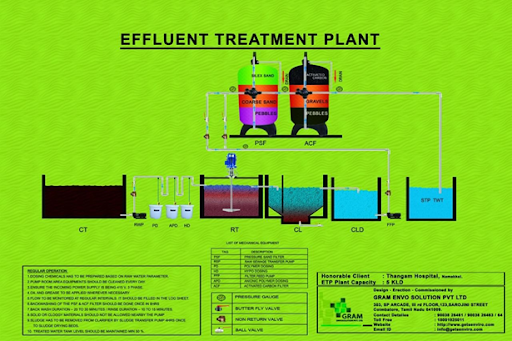



Primary Treatment: In this stage, suspended solids and organic matter are removed from the effluent through processes such as sedimentation or flotation. Primary treatment helps reduce the biochemical oxygen demand (BOD) and suspended solids content of the effluent.
Secondary Treatment: Secondary treatment is designed to further reduce the concentration of organic matter and nutrients in the effluent through biological processes. Common secondary treatment methods include activated sludge, trickling filters, and biological aerated filters. These processes rely on microorganisms to break down organic pollutants into simpler, less harmful substances.
Tertiary Treatment: Tertiary treatment is an optional stage that provides additional polishing of the effluent to achieve higher levels of quality. It may include processes such as filtration, disinfection, or advanced oxidation to remove remaining contaminants, pathogens, or nutrients.
Sludge Treatment and Disposal: In addition to treating the liquid effluent, effluent treatment plants also manage the treatment and disposal of sludge generated during the process. Sludge treatment may involve thickening, dewatering, and stabilization to reduce its volume and minimize environmental impacts before disposal or reuse.